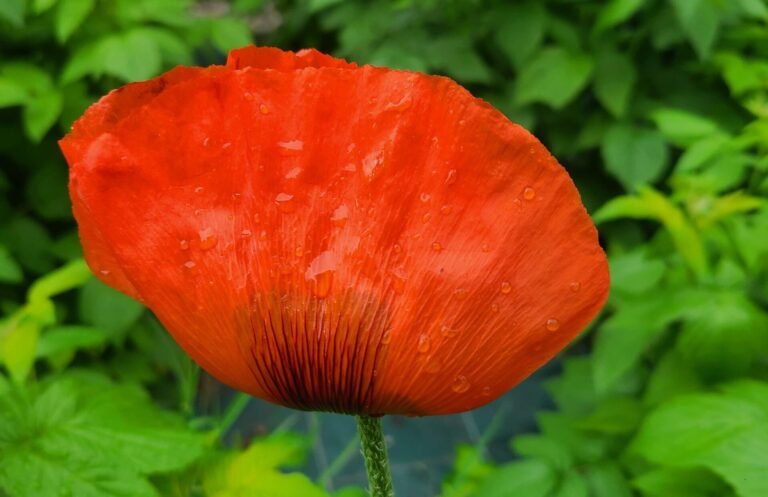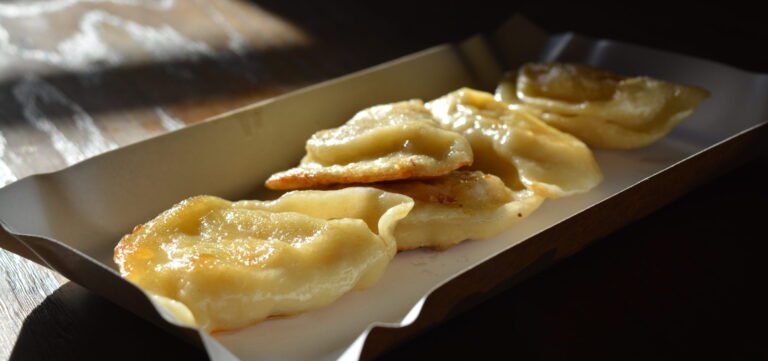I didn’t realize how important mushrooms were to Polish culture until we came to the U.S.
Whereas foraging for mushrooms was a regular activity back home, it was unheard of (to me) in the States. This was partly because we lived in the city—NYC isn’t known for its sprawling forests—but also because it’s just not as common.
Of course there are people in the States who dabble in mushroom foraging, but not on the same scale as in Poland.
Mushrooms in Polish culture
The popularity of mushroom hunting in Poland has much to do with the prevalence of both the mushroom in Polish cuisine, and of dense forests that lend themselves well to fungi growth.
Around 30% of Poland is made up of forest. The forests serve not only as reminders of the past, but also fantastic opportunities for foraging. Some of the most common mushrooms* in Poland include:
- Borowiki, Boletus edulis, cep or porcini
- Podgrzybki, Imleria badia, bay bolete
- Kurki, Cantharellus cibarius, golden chanterelle
- Maslaki, Suillus, Slippery Jack
- Rydze, Lactarius deliciosus, saffron milk cap
*Please note that some of these mushrooms have very similar looking, poisonous counterparts. Never pick mushrooms that you are not sure about.
The uses for the mushrooms vary. Aside from immediately cooking them into delicious sauce, most people will dry the mushrooms so they can use them in the future, e.g. during Wigilia, Christmas Eve dinner, where mushroom sauce plays a prominent role. Others will pickle them, to use as a side dish, or combine them with sauerkraut to use in pierogi or bigos.
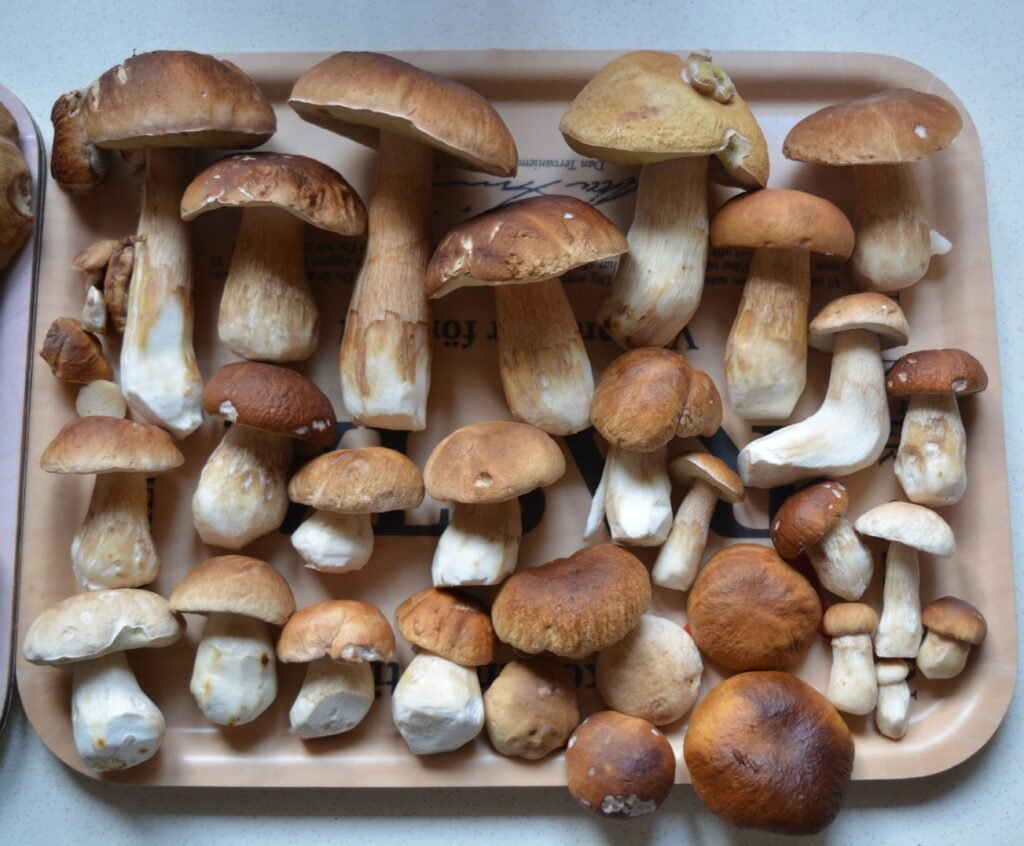
A lesson in patience
My grandmother and great aunt loved going mushroom picking in the nearby forests. With a small woven basket and pocket knife in hand, they set out into the woods, carefully scanning the moss-carpeted forest floor.
When I was younger, I didn’t understand the appeal. Spending hours trudging around—sometimes in circles, if you had poor orientation skills—avoiding branches, spiderwebs, and ticks. I got bored easily. Not to mention all the work that went in after you collected the mushrooms…cleaning, cutting, drying…it was an undertaking!
My feelings changed as I got older and slowing down became more appealing. With the sometimes overwhelming chaos of everyday life in the modern world, taking time to reflect and embrace nature became a gift.
With that, I began to take an interest in mushroom foraging, especially as the most coveted mushrooms, porcini, began popping up in our garden at home. After a few days of rain, I’d excitedly run outside in the morning to search for any signs of a tiny mushroom hat.
There is an indescribable joy of discovering a beautiful bulbous head peeking out through nature’s mossy carpet.
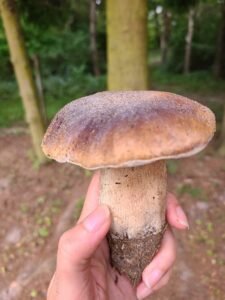
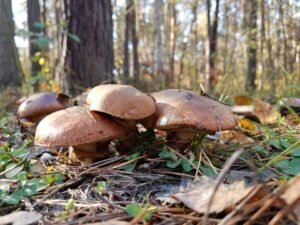
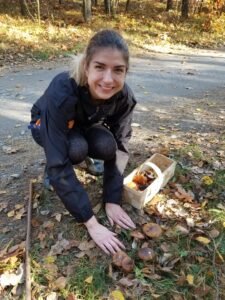
I still very much feared ticks—and for good reason, as ticks in Poland pose a real threat, carrying not only Lyme disease but also tick-borne encephalitis—and made sure to wear protective gear and bug spray. But I was able to take the time to appreciate the activity and in a way bond with my late grandmother and aunt, and all fellow Poles who enjoy mushroom picking.
Post-picking tasks
Hunting for the mushrooms was the fun part; the work started when you returned home with your loot. If your harvest was particularly fruitful, you could spend a few hours doing the following:
- cleaning the mushrooms
- cutting them up into smaller pieces
- pulling a thread through several pieces to then hang them to dry (unless of course you choose to use a food dehydrator–we always used the needle and thread method)
Once dry, the mushrooms would be placed in a jar and secured tightly to prevent spoilage. When planning to use them, you’d just take out the desired amount and place in water to rehydrate.
I recently saw a small bag of dried porcini for sale at Whole Foods. I couldn’t resist taking a whiff—and wasn’t disappointed. It smelled like home.
References
A Tradition as Old as Time: Mushroom Picking in Poland. https://culture.pl/en/article/a-tradition-as-old-as-time-mushroom-picking-in-poland
Stefanoff, P., Rosińska, M., & Zieliński, A. (2006). Epidemiologia chorób przenoszonych przez kleszcze w Polsce [Epidemiology of tick-borne diseases in Poland]. Przeglad epidemiologiczny, 60 Suppl 1, 151–159. https://pubmed.ncbi.nlm.nih.gov/16909794/

